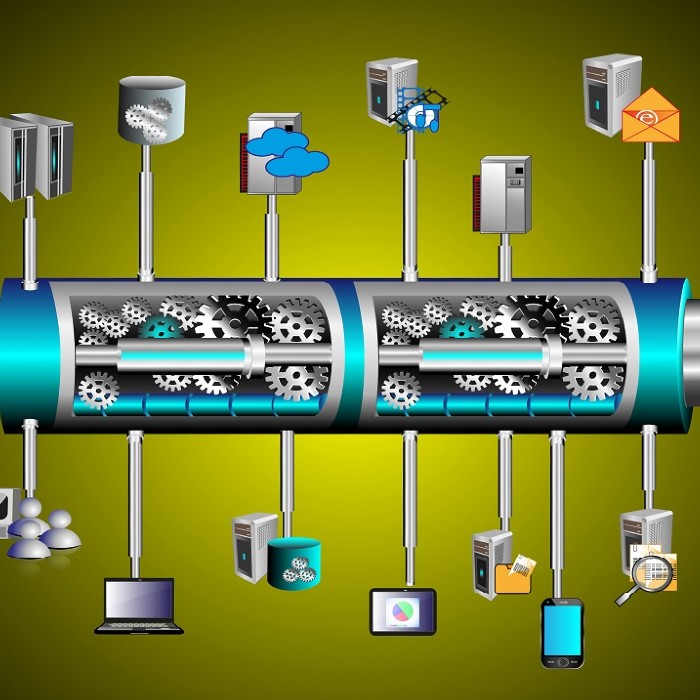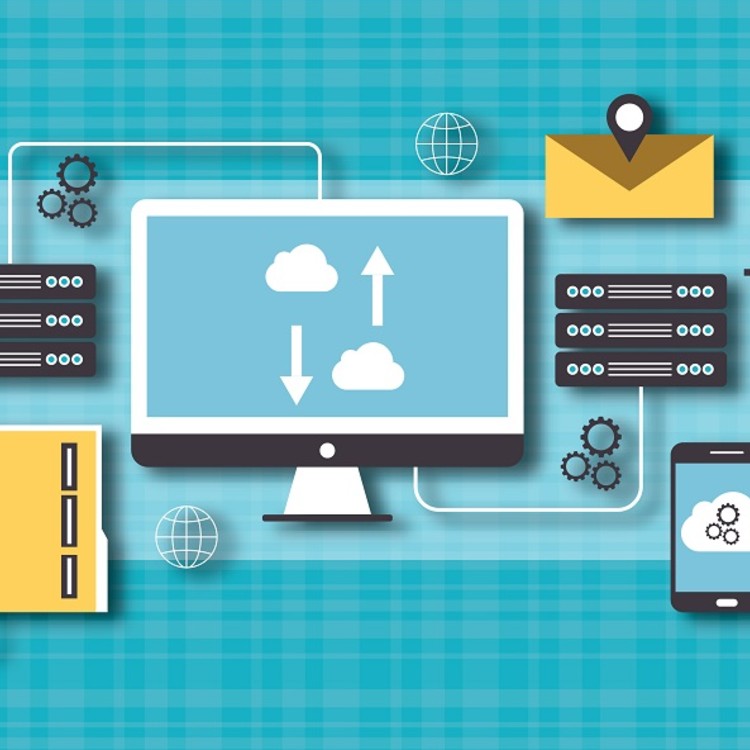Concerned about the ballooning costs of his legacy on-premises infrastructure, Brad Meyer, systems administrator at Middle Tennessee State University, knew he had to embrace the cloud. But how?
To Meyer, it was clear a public cloud service like Microsoft Azure could lower costs and lighten administrative tasks for many workloads. But he also knew that on-premises infrastructure would remain important for many academic applications. So, he started looking for the right balance in a hybrid cloud implementation.
“The hybrid model is definitely what we’re shooting for, with public cloud eventually a seamless part of our infrastructure,” Meyer explained.
Meyer is not alone in this line of thinking. 83% of over 1,700 respondents to the 2022 Enterprise Cloud Index report consider the hybrid cloud their ideal operating model.
Why is that?
In the new, uncertain world of COVID-19 induced lockdowns and work-from-home directives, IT has been struggling to provide optimal workforce connectivity while ensuring speed, security, and resilience.
Reports like the ECI show that companies operating a hybrid cloud multicloud environment are more favorably positioned to offer their employees and associates flexible work options, achieve competitive advantage,and drive a positive business impact overall compared to other setups.
The hybrid cloud has garnered top honors largely for its ability to dynamically match workloads to the right environment – whether on-premises or in the public cloud. Meyer’s implementation plans reflect what a majority of businesses say they need: mobility. A full 91% of 2022 ECI respondents said that they consider app mobility across clouds to be important or essential.
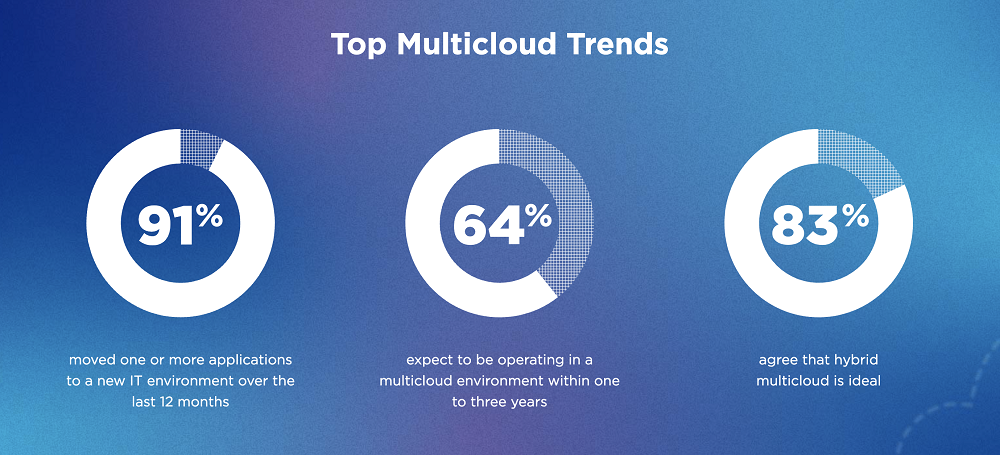
Having said that, some core outcomes that IT leaders look at in parallel – while providing anywhere, anytime application and data access to employees and partners – would be:
- Deliver a consistent user experience
- Reduce TCO of the infrastructure by minimizing CAPEX and optimizing OPEX
- Integrate diverse systems, both legacy and new
- Ensure full adherence to security policies and compliance to data and privacy regulations
Clearly, achieving seamless enterprise mobility across the cloud is not less than a digital transformation on its own.
Key Trends Influencing Cloud Mobility
The cloud and mobile devices both are now mature markets with near-100% adoption rates. This extraordinary shift happened in a span of just about a decade, topped up by a life-changing pandemic that affected all and sundry.
There are four noteworthy technology and workplace trends that have given rise to the need for cloud mobility solutions.
Mobile Devices and Apps:
Demand for cloud-based mobile apps is growing unceasingly as a result of the universal use of mobile devices. The mobile cloud market is already worth $30 billion. Technologies and best practices such as cloud-native are changing the way that mobile apps are built and used to enable various business workloads.
In today’s user-centric enterprise, cloud-based apps add a layer of complexity to the already diverse range of mobile apps and devices.
The SaaS Explosion:
SaaS applications has emerged as the largest and most mature segment of the public cloud (the most popular cloud delivery model) with a $148 billion market. Today, the average enterprise uses nearly 300 SaaS apps in various business functions.
“Organizations across industries hastened the replacement of legacy business applications with a new breed of SaaS applications that is data-driven, intuitive, and ideally suited for more distributed cloud architectures,” said Frank Della Rosa, Research Director, SaaS and Cloud Software at IDC.
In the absence of proper integration with endpoint devices, cloud platforms, and other SaaS apps, data and information silos can quickly emerge, resulting in the breakdown of critical workflows.
End User Computing (EUC):
“EUC is an umbrella term for technology people use to get stuff done,” said Ruben Spruijt, Sr. Technologist for Nutanix, who believes that companies should focus on delivering services anytime, anyplace and on any device the business consumer needs to access them.
Mass quarantines and office closures left businesses scrambling to deploy work-from-anywhere solutions, resulting in the large-scale adoption EUC environments and practices. As evidence of this transition, the market for Desktop-as-a-Service (DaaS) solutions grew by 98% in 2020 and was forecast to grow another 68% in 2021 according to a Gartner report.
EUC needs to be rapidly deployable and easily scalable, while better meeting the needs of dynamic business operations and demanding end users. A hybrid EUC model that combines the advantages of on-premises and cloud EUC using a flexible mix of private and public cloud resources is emerging.
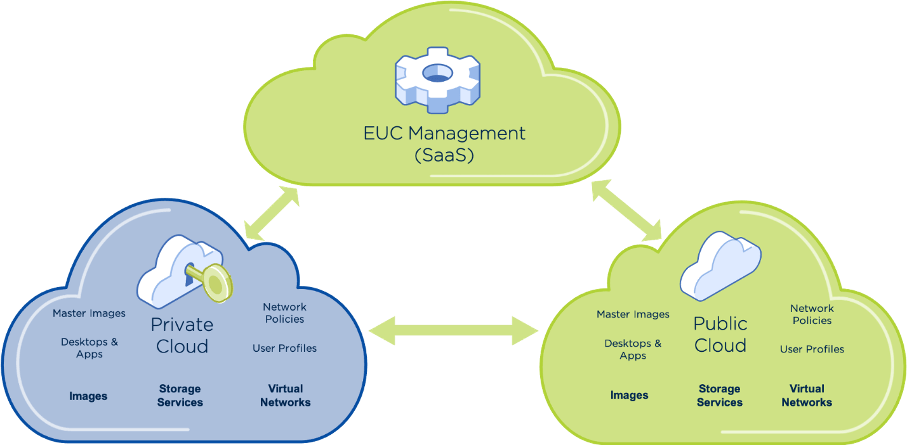
The remote workplace is here to stay. And the remote worker is staying at home. Upwork’s Future Workforce Survey estimates that over 40 million US workers – over 25% of the workforce – will be fully remote within the next five years.
“Enterprises will need to solve the challenges in cloud mobility, data access, collaboration, and UX sooner rather than later if they want any semblance of business-as-usual,” said Jeff Shupack, President of Advisory Practice and SAFe Fellow at Project & Team.
“The employee is already at the center of the modern workplace. The onus lies on IT to build and deploy hybrid infrastructure that balances user needs with business needs.”
The Road to Cloud Mobility Isn’t Smooth
Given the significant changes brought about by the trends mentioned above, enterprise cloud architects must answer quite a few questions with regard to mobility:
- Does the organization have the network and storage capabilities to allow the transfer of a workload to a SaaS solution or hosted model where the application resides in the cloud? Do they meet the security/compliance requirements?
- Can users get multi-platform access across complex private cloud networks?
- What happens in case of insufficient network bandwidth or an unstable connection? Does the application support and leverage technologies like HTML5 that enable data caching so that mobile cloud applications can continue to function through short outages?
- How is the lifecycle of various devices, applications, platforms, and infrastructure that make up the cloud environment managed? What are the policies for provisioning and decommissioning of resources?
- How will data integrity be maintained when users sync their mobile devices with the cloud in a BYOD or CYOD model? Will these devices be remotely managed by enterprise IT admins? Will they create enterprise sandboxes to keep personal data separate from corporate data? What happens when users’ mobile devices go missing beyond a certain time period (the device is stolen or the user quits)?
- Many mobile platforms are not able to support full-featured or sophisticated document or media editing applications that can be used over the cloud. What additional tools will be needed for effective collaboration in such scenarios?
Perhaps the only viable infrastructure solution that enables organizations to answer all of these questions is a hybrid multicloud.
However, the path to a hybrid cloud implementation that delivers the kind of fluidity Meyer envisions is not as smooth as one might imagine.
“There are issues around app mobility, data mobility and cloud mobility,” said Rajiv Mirani, former CTO at Nutanix.
Organizations seeking to move applications and data from their private cloud to the public cloud and back must assure that the software in each place is interoperable. Mirani described this as “cloud mobility” – a highly desired state that is still a work in progress.
“The public cloud was built for certain reasons, on a certain set of principles – and they don’t match those of the on-premises infrastructure,” observed Mirani. Though enterprises are “cloudifying” their data centers, the environments aren’t technically the same; at least, not yet.
“What we as an industry are working toward is getting the cloud on the left [public] to match up to the cloud on the right [private],” said Mirani.
The disconnect between legacy applications and cloud-native applications creates a significant wrinkle in hybrid deployments. According to Mirani, application mobility is readily achieved only if the app is “cloud-native” or designed from the ground up for cloud. However, IT shops often face having to completely rewrite legacy apps to work in the cloud, creating steep upfront costs and deployment delays.
Meanwhile, data mobility might be an even tougher nut to crack than app mobility. Here, a major obstacle is thrown in by the cloud providers themselves.
“Cloud providers don’t have an incentive to help you get data out of their infrastructure; they don’t provide the hooks you need to move things in and out,” said Mirani. Worse, cloud providers also charge egress fees to get data out of their coffers when a customer wants to leave the service – a potentially unforeseen (and unbudgeted) cost of cloud computing.
Realizing the Hybrid Cloud Promise with Hyperconverged Infrastructure (HCI)
Meyer’s first step down the hybrid cloud path was to overhaul his on-premises IT infrastructure. “In the last three years, hyperconverged infrastructure has changed our lives,” he said. “We got rid of our SAN and our heavy compute nodes. We condensed from six racks to one. It’s way cheaper to go HCI on-prem.”
“Our end goal is to have a seamless network with site-to-site VPNs across clouds that are extensions of our [on-premises] network,” he added. “We want to be able to move VMs up there and back or move Docker containers from one place to another easily.”
Mirani explained why HCI is a necessary first step for the hybrid cloud journey.
“Hybrid computing requires running your private data like a cloud, and HCI provides the foundation for that,” he said.
HCI is simply the intermediate step that allows organizations to pace moving their EUC model to the cloud. One of the biggest advantages here having the control plane or broker in the cloud. Admins can simply centralize EUC management using a SaaS app or offload management of the platform to a vendor.
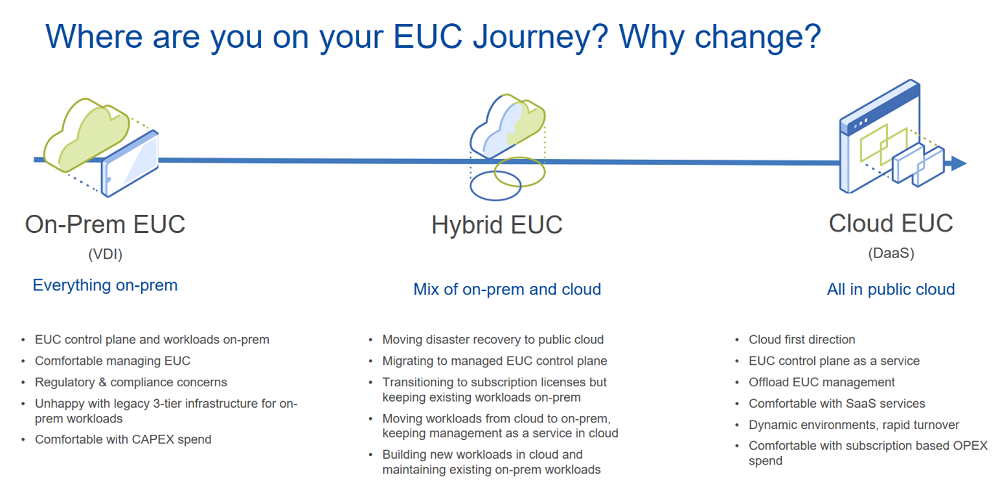
To build a flexible hybrid cloud environment, enterprises can start by making both private and public cloud infrastructures compatible. This ensures there are no hiccups while moving applications and data.
Organizations will be able to continue to run legacy applications on their hyperconverged private cloud infrastructure and move them to a public cloud service when it makes sense. Conversely, they’ll also be able to run applications built for public cloud services on-premises when appropriate.
What does this look like in practice? AWS offers Amazon Relational Database Service (RDS), which lets IT set up and run a relational database in the cloud. Nutanix Era, a software suite that automates and simplifies database management, works the same way, enabling IT to move applications and data between an on-premises HCI implementation and the public cloud.
Similarly, Amazon offers Simple Storage Service (S3), which provides object storage through a web interface. Nutanix Objects is an S3-compatible object storage capability that enables the mobility of objects between the Amazon cloud and an enterprise data center.
Finding a Balance
Meyer is looking forward to using public cloud services for DevOps and testing, having already tested the waters with Microsoft Azure. But he’s concerned that developers might spin up a cloud server, then forget about it — leaving that server abandoned to generate ongoing, hidden charges to the university. Security is another concern, he said.
“The way you do security in the public cloud is a whole new thing that we have to learn, and our people are already busy day in and day out,” he said. “We absolutely need tools to see and manage all those workloads across cloud environments.”
One solution that could help is Nutanix Beam, which offers the ability to identify and fix cloud security issues in real time, move resources across clouds, and offer accurate visibility into cloud metering to keep costs under control in AWS, Azure, and Nutanix private clouds.
Either way, the hybrid cloud is not a waystation on the path to a world dominated by public cloud services. The ECI report found that traditional data center usage unexpectedly increased in the last couple of years, showing that organizations value on-premises as well as cloud-based implementations. But the benefits of a hybrid cloud architecture won’t just materialize on their own.
“By planning ahead and implementing the right technologies, enterprises can achieve the flexibility of application, data and cloud mobility,” Mirani said.
For IT decision-makers like Meyer, that translates to significant savings in deployment time and TCO.
Stan Gibson is a contributing writer with 36 years of experience as a technology journalist.
Dipti Parmar contributed this thisi article. She is a marketing consultant and contributing writer to Nutanix. She writes columns on major tech and business publications such as IDG’s CIO.com, Adobe’s CMO.com, Entrepreneur Mag, and Inc. Follow her on Twitter @dipTparmar and connect with her on LinkedIn.
© 2022 Nutanix, Inc. All rights reserved. For additional legal information, please go here.


